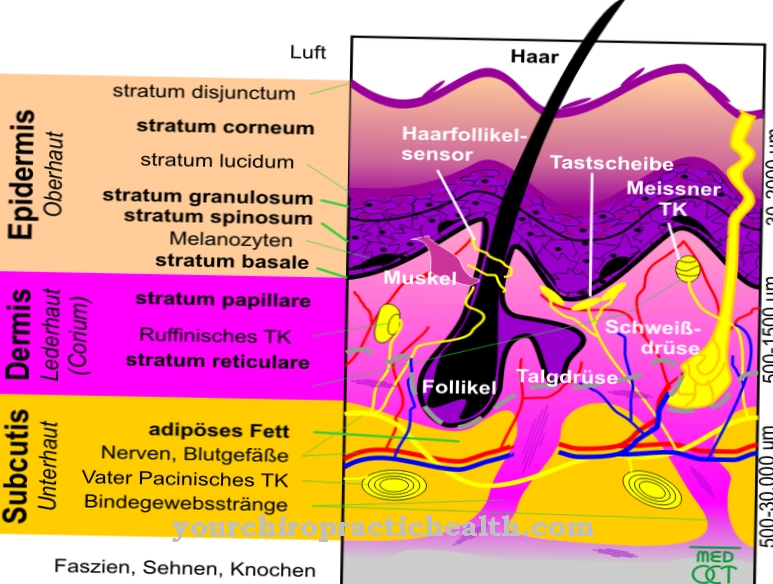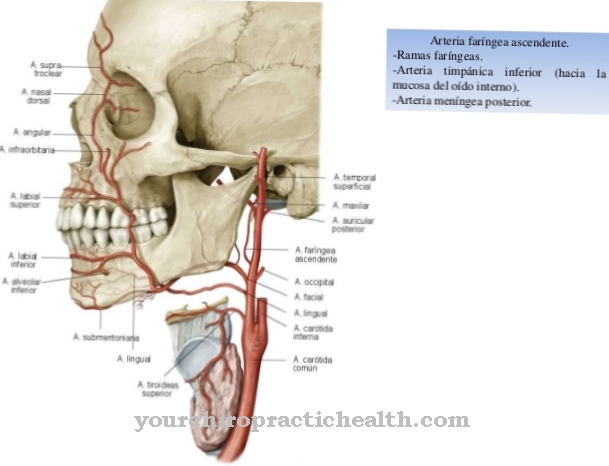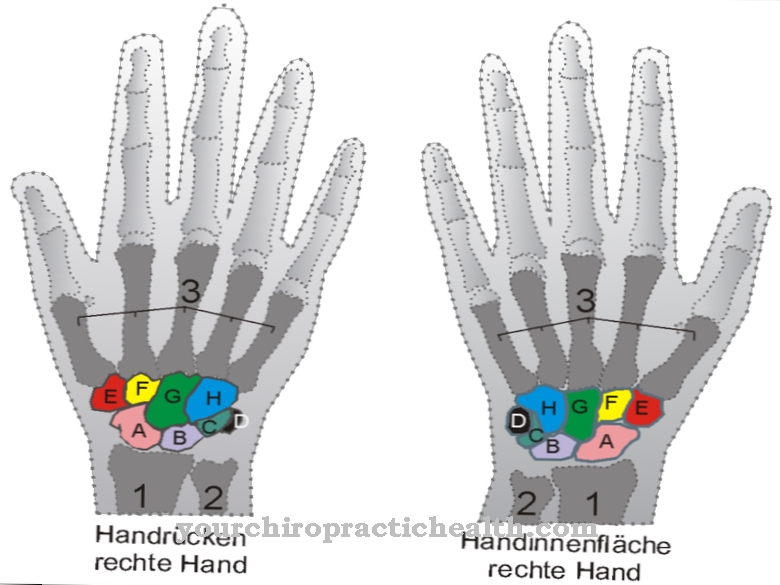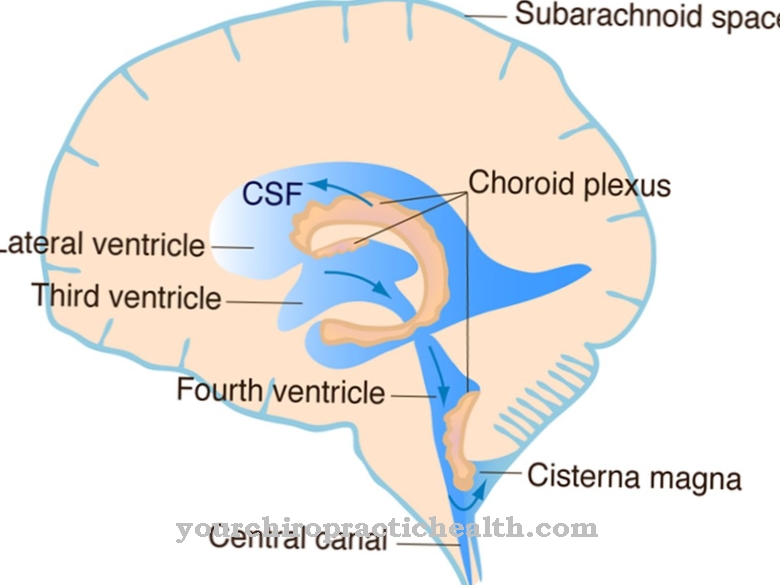Of the Precuneus is a part of the cerebrum. It is located at the level of the back of the head, directly under the skull. Together with the hippocampus, it takes on tasks in the learning process.
What is the Precuneus?
The precuneus is part of the central nervous system. It is located in the cerebrum, the telencephalon. In the medial view of the brain, it becomes visible in the upper last third of the cerebrum.
It is clearly visible between the transition from the precentral gyrus to the postcentral gyrus and the parietooccipital sulcus. It is assigned to the gray matter of the cerebrum. This represents an essential component of the central nervous system. It contains nerve cell bodies, dendrites, axons as well as glial cells and capillaries. Research has shown that the precuneus, together with the hippocampus, performs important functions of learning. In this way he should be involved in the development of the self-image and episodic memory.
The Precuneus is always active in various imaging examinations such as magnetic resonance tomography when it comes to perceiving one's own self. For this reason, the precuneus plays an essential role in exploring the conscious state of mind. Even if the research in this area has not yet been completed, it is clear to the scientists that the Precuneus develops its own memory representation.
Anatomy & structure
The cerebrum is divided into different areas. They include the frontal lobes, the parietal lobes, the temporal lobes and the cingulate gyrus. Together they encase the bar, the hippocampus and the limbic system.
The central sulcus wraps around the paracentral lobule and ends above the cingulate gyrus. The paracentral lobule forms the transition from the precentral gyrus to the postcentral gyrus. The sulcus parietooccipitalis is located further back. This separates the parietal from the occipital lobe. The calcarinus sulcus runs almost at right angles to it. The primary visual cortex is located in its walls. The sulcus parietooccipitalis and the sulcus calcarinus delimit the structure of the cuneus. This is wedge-shaped.
Rostral of the sulcus parietooccipitalis is the precuneus. The precuneus is thus located between the paracentral lobule and the parietooccipital sulcus. From a neurophysiological point of view, the precuneus is often described as part of the superior parietal lobule. This is a part of the partial lobe and is called the cortically sensitive secondary field. The tissue of the precineus corresponds to that of the rest of the cerebrum. It is called gray matter, which is made up of neurons, glial cells, and fibers containing myelin.
Function & tasks
Tasks such as self-awareness, self-reflection and self-awareness are ascribed to the Precineus. In everyday life, processes take place in this area of the brain that result in a self-assessment. In the Precuneus it is decided whether the person sees himself as capable of coping with a task or whether he rejects it. This requires elements of long-term memory, experience and an assessment of the current situation.
Self-awareness or self-awareness is a very complex process. Together with self-observation for your own awareness-building and self-confidence, they represent important areas in dealing with everyday situations. The correct assessment of current challenges, emotions to cope with, such as courage, perseverance or strength as well as the review of existing resources are weighed in a few seconds or minutes. This process is largely controlled from the Precuneus. In cooperation with the hippocampus, processes of learning take place in this brain area.
Long-term memories are formed in the hippocampus. This is where the long-term potentiation takes place. This takes several days to months. If a memory is stored in declarative memory, it can be accessed for life. This includes factual knowledge, but also knowledge of the course of action. The latter plays an important role in self-assessment. A new action can only be planned and successfully implemented through the knowledge of how actions take place and what possibilities your own organism creates.
You can find your medication here
➔ Medicines against memory disorders and forgetfulnessDiseases
Lesions in the brain can be caused by various diseases, such as inflammation, circulatory disorders or tumors. In addition, damage can be caused by accidents, falls or as a result of surgical interventions.
Brain swelling creates pressure in the brain. The swelling cannot escape due to the given shape of the skull. The affected brain mass shifts healthy areas. These are jammed and can no longer adequately fulfill their tasks. Bleeding can occur with consequences for the central nervous system.
Lesions and functional impairments in the Precuneus lead to problems in the process of learning. Learning processes cannot be completed successfully. This leads to a reduction in self-assessment.
Failures of the precuneus are associated with diseases in which a disorder of self-awareness is indicated. Diseases such as borderline personality disorder or the eating disorder anorexia nervosa are therefore associated with the functional impairment of the precuneus. With both diseases, patients suffer from a faulty self-image. Borderline personality disorder is also known as emotionally unstable personality disorder. It goes hand in hand with impulsiveness and instability of emotions and mood.
The disorder presents problems with one's own identity and creates immense problems in interpersonal relationships. In anorexia nervosa, patients suffer from the body schema disorder. Even with objective facts, they cannot perceive what body image they have. They see their bodies as fat or even fat, even if they are very underweight.













.jpg)

.jpg)
.jpg)











.jpg)